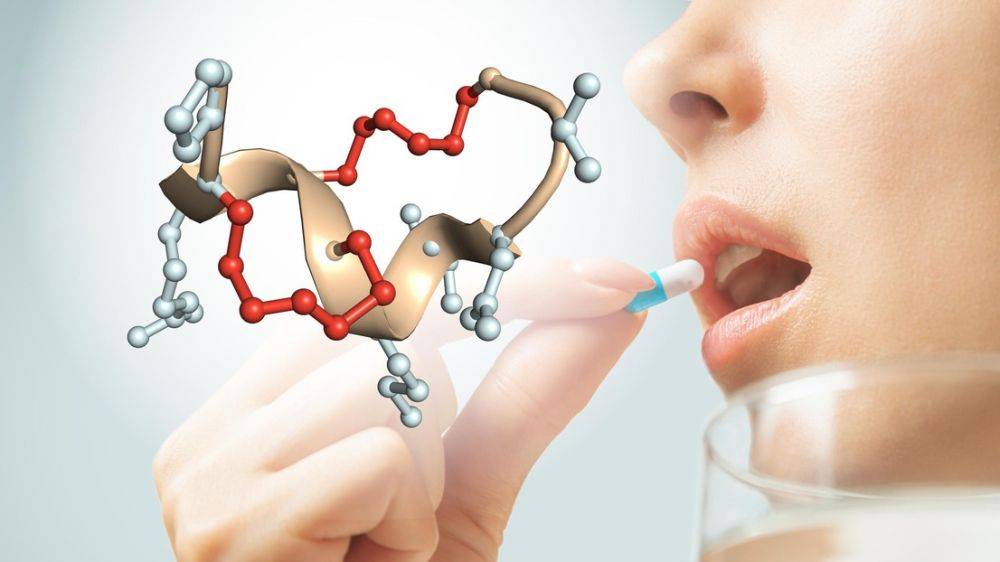Actin Binding Peptide-7: Potential Mechanisms and Implications in Cellular Dynamics
Actin Binding Peptide-7 (ABP-7), a novel compound of growing interest, has garnered attention due to its potential impacts on cellular functions, particularly in areas related to actin cytoskeletal regulation. Studies suggest that ABP-7 may influence numerous cellular processes, including motility, shape maintenance, intracellular transport, and signal transduction.
Research indicates that given its possible modulatory impact on actin dynamics, ABP-7 may be a promising candidate for research implications across fields such as cellular biology, tissue engineering, and disease research. This article will explore ABP-7's potential mechanisms of action, hypothesized implications in scientific research, and its relevance in future research inquiries.

Introduction to Actin and Actin Binding Peptides
Actin is a highly conserved protein that plays an essential role in the structure and function of eukaryotic cells. Found in various cellular locations, actin filaments contribute to cell shape, enable motility, and facilitate intracellular transport. Actin dynamics—its ability to rapidly polymerize and depolymerize—allow cells to respond to their environment and maintain homeostasis. Many cellular processes rely on the regulated assembly of actin filaments, a process mediated by actin-binding proteins and peptides, which are believed to control the polymerization and organization of actin filaments within cells.
Structural Characteristics and Mechanisms of Actin Binding Peptide-7
ABP-7 is theorized to possess a sequence and structure that enable selective binding to specific sites on actin filaments. Research indicates that this interaction might facilitate alterations in the conformation of actin, potentially influencing filament stability and, in turn, impacting cellular processes that depend on actin network organization. Investigations purport that ABP-7's hypothesized actin-binding domain may allow it to either stabilize or destabilize filamentous actin (F-actin), influencing actin polymerization rates in response to cellular needs.
The peptide has been hypothesized to interact with actin's dynamic points of growth and depolymerization, possibly modifying how cells manage cytoskeletal turnover. This property may prove particularly valuable in studying cellular processes requiring rapid cytoskeletal remodeling, such as mitosis, migration, and cellular differentiation.
Cell Motility and Migration Research
The role of actin in cell motility has been well-documented, with filamentous actin structures forming the basis of cellular movement in numerous cell types. Given ABP-7's proposed potential to bind and regulate actin filaments, researchers have speculated on its potential utility in studying cell motility mechanisms. By applying ABP-7 in vitro, researchers might be able to control or modulate the migration patterns of specific cell populations, such as immune cells or fibroblasts.
Cytoskeletal Research and Potential in Tissue Studies
In tissue engineering, the cytoskeletal architecture is crucial for directing cell shape and function within artificial tissue constructs. Findings imply that ABP-7's potential for modulating actin dynamics may be of interest in designing cellular environments that mimic native tissue structures, a critical factor for constructing viable tissue models.
The peptide's potential to influence cytoskeletal integrity and organization may allow it to aid in the development of scaffold environments that better support cell growth, differentiation, and spatial organization. For example, when applied to engineered tissues, ABP-7 is speculated to help achieve desired cell alignments and layering patterns necessary for tissue function.
ABP-7 Peptide: Cancer Research and Cytoskeletal Dysregulation
The cytoskeletal abnormalities seen in many cancers are thought to contribute to malignant cells' uncontrolled proliferation, migration, and invasion. Scientists speculate that ABP-7's potential to influence actin dynamics might provide a tool for investigating cytoskeletal dysregulation in cancer.
It has been hypothesized that ABP-7 might allow researchers to modulate actin filament stability within cancer cell populations, providing insights into how cytoskeletal alterations influence cancer progression. By exploring how ABP-7 may affect the actin networks in malignant cells, researchers may gain a better understanding of the mechanisms underlying metastasis and tumor invasiveness. Additionally, it seems that ABP-7 might be applied to evaluate hypotheses on cytoskeletal-targeted approaches, a promising avenue in cancer research that seeks to disrupt the structural adaptations enabling cancer cell survival and migration.
Neuroscience and Synaptic Plasticity
Actin dynamics are essential in the nervous system, particularly in synaptic plasticity—the ability of synaptic connections to strengthen or weaken over time. ABP-7's potential to modulate actin filament stability and organization is thought to position it as a helpful tool in neuroscience research, especially in studies of memory formation, learning, and neurodevelopmental disorders.
Synaptic plasticity relies on actin remodeling to adjust the strength and structure of synaptic connections. ABP-7 might hypothetically assist researchers in exploring how actin dynamics impact the development and plasticity of neuronal networks. If ABP-7 influences the stability of actin filaments within dendritic spines (small, actin-rich protrusions on neurons), it might reveal more about the structural basis of learning and memory. Further research into these impacts may open new doors for understanding neurodevelopmental disorders associated with cytoskeletal anomalies, such as autism spectrum disorders and schizophrenia.
Future Directions and Implications for Research
Actin Binding Peptide-7 stands as an intriguing candidate for exploration across various research fields. Its proposed actin-regulating potential may provide insights into numerous cellular processes, such as cell motility, cytoskeletal organization, and signal transduction. It has been proposed that given its potential to bind and modulate actin selectively, ABP-7 might serve as a valuable tool for investigations in cancer biology, tissue engineering, neuroscience, and beyond. Researchers may find Actin Binding Peptide-7 online.
References
[i] Dominguez, R., & Holmes, K. C. (2011). Actin structure and function. Annual Review of Biophysics, 40, 169–186. doi:10.1146/annurev-biophys-042910-155359
[ii] Pollard, T. D. (2016). Actin and actin-binding proteins. Cold Spring Harbor Perspectives in Biology, 8(8), a018226. doi:10.1101/cshperspect.a018226
[iii] Olson, M. F., & Sahai, E. (2009). The actin cytoskeleton in cancer cell motility. Clinical & Experimental Metastasis, 26(4), 273–287. doi:10.1007/s10585-008-9174-2
[iv] Cingolani, L. A., & Goda, Y. (2008). Actin in action: The interplay between the actin cytoskeleton and synaptic efficacy. Nature Reviews Neuroscience, 9(5), 344–356. doi:10.1038/nrn2373
[v] Burkel, B. M., von Dassow, G., & Bement, W. M. (2007). Versatile fluorescent probes for actin filaments based on the actin-binding domain of utrophin. Cell Motility and the Cytoskeleton, 64(11), 822–832. doi:10.1002/cm.20233





